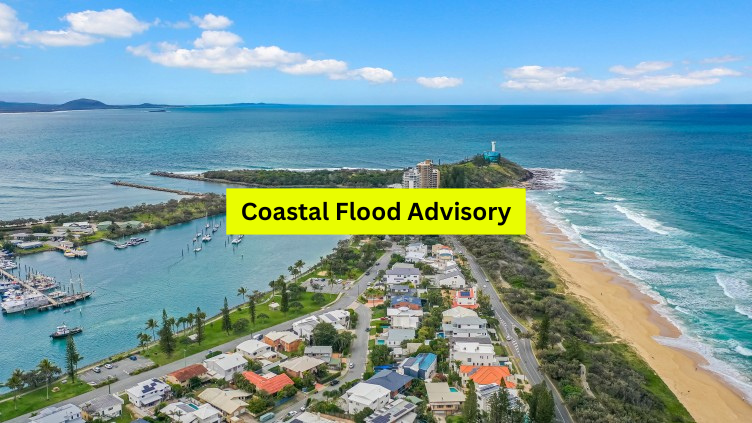Coastal Flood Advisory vs coastal flood warning 2023

Coastal areas around the world are particularly vulnerable to the impacts of climate change, with one of the most pressing concerns being the increasing frequency and severity of coastal floods. In order to safeguard coastal communities and minimize the risks associated with these events, it is crucial to have effective systems in place to provide timely information and guidance. This article explores the concept of a coastal flood advisory and the importance of proactive measures to protect vulnerable regions.
Understanding Coastal Floods
What is a coastal flood?
A coastal flood refers to the inundation of normally dry land along the coast, typically as a result of high tides, storm surges, or a combination of both. These events can lead to significant property damage, erosion of beaches, and threats to human safety.
Causes of coastal flooding
Coastal flooding can be caused by various factors, including:
- Storm surges generated by severe weather systems such as hurricanes or tropical storms.
- High tides amplified by gravitational forces from the moon and sun.
- Land subsidence, where the land gradually sinks or settles.
- Climate change-induced sea-level rise, which exacerbates the impacts of other factors.
Impact of climate change on coastal flooding
Climate change is a significant driver of increased coastal flood risks. Rising global temperatures contribute to the melting of glaciers and ice caps, leading to the expansion of ocean waters. This, coupled with thermal expansion, results in higher sea levels. As a consequence, even minor storm events can produce more substantial and damaging coastal floods.
Coastal Flood Advisory: Meaning and Purpose
Definition of a coastal flood advisory
A coastal flood advisory is an official warning issued by meteorological and environmental agencies to inform coastal communities about an impending flood event. It serves as an alert system to notify residents, emergency responders, and relevant stakeholders of the potential risks and necessary precautions to be taken.
Role of Coastal Flood advisory in protecting coastal communities
The primary purpose of a coastal flood advisory is to ensure the safety and well-being of individuals residing in at-risk coastal regions. By providing early warning and guidance, advisories help communities prepare and respond effectively, reducing the potential for loss of life and property damage. It also enables local authorities to mobilize resources and coordinate emergency response efforts.
Importance of Preparedness
Why should coastal communities be prepared?
Coastal communities must be prepared for flood events to minimize their impact and ensure the safety of residents. Preparedness measures enable communities to:
- Evacuate vulnerable areas promptly.
- Protect critical infrastructure and assets.
- Implement temporary flood barriers or sandbagging techniques.
- Communicate and disseminate crucial information to residents and visitors.
Benefits of early warning systems
Early warning systems like coastal flood advisory play a vital role in coastal flood preparedness. By utilizing advanced technologies and monitoring tools, these systems can detect and predict flood events with greater accuracy. Timely warnings allow residents to take necessary precautions, such as securing their properties, relocating to safer areas, or accessing emergency services.
Mitigation and Adaptation Measures
Building resilient infrastructure
Constructing resilient infrastructure is essential for coastal communities to withstand flood events. This includes:
- Elevated buildings and critical facilities.
- Flood-resistant construction materials and techniques.
- Stormwater management systems.
- Improved drainage and flood control mechanisms.
Implementing coastal defense strategies
Coastal defense strategies aim to protect coastal areas from floodwaters. These strategies may involve:
- Building sea walls and levees.
- Restoring and maintaining natural barriers like dunes and wetlands.
- Installing flood gates and pumps.
- Incorporating nature-based solutions, such as mangrove restoration.
Enhancing natural buffers
Preserving and enhancing natural buffers, such as coastal vegetation and sand dunes, can provide additional protection against coastal flooding. These natural features act as absorbers and dissipaters of wave energy, reducing the impact of flood events.
Community Engagement and Education
Raising awareness about coastal flood risks
Raising awareness about the risks associated with coastal flooding is crucial for fostering community engagement. Educational campaigns and outreach initiatives can inform residents about:
- The causes and impacts of coastal floods.
- Personal preparedness measures.
- Community resources and emergency response procedures.
- Long-term adaptation strategies.
Promoting community involvement in resilience planning
Engaging community members in resilience planning fosters a sense of ownership and collective responsibility. Community-driven initiatives can identify local vulnerabilities, prioritize adaptation measures, and empower individuals to actively contribute to their community’s resilience.
Government Initiatives and Policies
Role of local and national authorities
Local and national authorities play a crucial role in coastal flood management. They are responsible for:
- Developing and implementing flood risk assessment and management plans.
- Establishing building codes and regulations to ensure flood-resistant construction.
- Investing in infrastructure improvements and maintenance.
- Coordinating emergency response efforts and resources.
Funding for coastal flood protection projects
Governments often allocate funding for coastal flood protection projects. These initiatives may include:
- Coastal engineering projects.
- Research and development of innovative flood mitigation technologies.
- Grants and financial assistance programs for property owners in flood-prone areas.
- Collaborative partnerships with public and private entities for flood resilience initiatives.
Case Studies: Successful Coastal Flood Management
Several coastal communities have implemented effective strategies to manage and mitigate the impacts of coastal flooding. Some notable examples include:
- The Netherlands: The Dutch have implemented an extensive system of dikes, sea barriers, and coastal defense infrastructure to protect their low-lying lands.
- Singapore: The city-state has invested in advanced drainage systems and reservoirs to manage stormwater and reduce flood risks.
- New Orleans, USA: Following the devastation caused by Hurricane Katrina, New Orleans has implemented an improved levee system and flood protection measures to enhance resilience.
Many such updates one can find in latest news updates.
Coastal Flood Advisory vs Coastal Flood Warning: Understanding the Difference
In coastal areas, the possibility of flooding poses a significant concern for residents and visitors alike. To effectively communicate the severity of such events, weather authorities issue warnings and advisories. Two common terms used in this context are “Coastal Flood Advisory” and “Coastal Flood Warning.” While they both indicate the likelihood of coastal flooding, there are distinct differences between these terms. In this article, we will delve into the dissimilarities between a Coastal Flood Advisory and a Coastal Flood Warning, helping you understand their implications and the appropriate actions to take in each scenario.
What is a Coastal Flood Advisory?
A Coastal Flood Advisory is a notification issued by weather authorities when there is a possibility of coastal flooding in a particular area. It serves as a cautionary alert, informing residents and visitors about the potential risks associated with flooding. During a Coastal Flood Advisory, weather conditions are likely to cause minor flooding, which may result in inconveniences but does not pose an immediate threat to life or property.
Key Characteristics of a Coastal Flood Advisory
- Warning Duration: Coastal Flood Advisories are typically issued in advance, giving people time to prepare for the anticipated flooding. The duration of the advisory may vary depending on the specific circumstances, but it is usually shorter than a warning.
- Severity: While a Coastal Flood Advisory acknowledges the presence of flooding conditions, it indicates a relatively lower level of severity. The flooding during an advisory is expected to be minor, affecting low-lying areas, coastal roads, and other vulnerable spots.
- Potential Impacts: During a Coastal Flood Advisory, residents and visitors should remain cautious and take necessary precautions. Some potential impacts may include localized street flooding, minor beach erosion, and restricted access to certain coastal areas.
What is a Coastal Flood Warning?
A Coastal Flood Warning is a more serious alert issued by weather authorities when significant coastal flooding is expected in a specific area. It signifies that the flooding poses a higher risk to life and property compared to a Coastal Flood Advisory. When a Coastal Flood Warning is in effect, immediate action should be taken to ensure safety and minimize potential damages.
Key Characteristics of a Coastal Flood Warning
- Warning Duration: Coastal Flood Warnings are issued when severe flooding is imminent or already occurring. The duration of a warning is typically longer than an advisory, covering the period during which the significant flooding is anticipated.
- Severity: A Coastal Flood Warning indicates a higher level of severity, with the potential for more extensive flooding. The flooding during a warning may affect a larger area, including residential neighborhoods, businesses, and infrastructure close to the coast.
- Potential Impacts: During a Coastal Flood Warning, individuals must take immediate action to protect themselves and their property. Potential impacts may include widespread flooding of coastal areas, significant property damage, disruption of essential services, and potential risks to life.
Understanding the Distinctions
To summarize, the key distinctions between a Coastal Flood Advisory and a Coastal Flood Warning are as follows:
- Coastal Flood Advisory: Issued in advance, shorter duration, minor flooding, cautionary alert, inconveniences expected.
- Coastal Flood Warning: Imminent or occurring flooding, longer duration, significant flooding, immediate action required, potential risks to life and property.
Conclusion
Coastal flood advisories, coupled with proactive mitigation and adaptation measures, are vital for protecting coastal communities from the increasing risks posed by coastal flooding. By raising awareness, fostering community engagement, and implementing resilient infrastructure, we can minimize the impacts of these events and ensure the safety and well-being of coastal residents.
In coastal regions, understanding the difference between a Coastal Flood Advisory and a Coastal Flood Warning is crucial for ensuring personal safety and taking appropriate measures to mitigate the effects of flooding. By paying attention to these alerts and heeding the instructions provided by local authorities, residents and visitors can be better prepared and respond effectively to potential coastal flooding events. Stay informed, stay safe, and be proactive in protecting yourself and your community from the risks associated with coastal flooding.
FAQs
1. How can I determine if I am living in a coastal flood-prone area? To determine if you are living in a coastal flood-prone area, you can consult local flood maps, contact your local authorities or emergency management agencies, or seek information from relevant online resources.
2. What should I include in my emergency preparedness kit for coastal floods? Your emergency preparedness kit for coastal floods should include essential items such as non-perishable food, water, a battery-powered radio, flashlights, extra batteries, a first aid kit, medications, important documents, and personal hygiene items.
3. Can insurance cover damages caused by coastal flooding? Insurance coverage for damages caused by coastal flooding may vary. It is important to review your insurance policy and consider obtaining additional flood insurance coverage to protect your property adequately.
4. How can I contribute to coastal flood resilience in my community? You can contribute to coastal flood resilience in your community by participating in local planning and decision-making processes, raising awareness about flood risks, supporting initiatives that promote sustainable coastal development, and adopting flood-resistant practices in your own property.
5. Are coastal flood advisories issued for all flood events? Coastal flood advisories are typically issued for flood events that pose a significant risk to coastal communities. The issuance of advisories depends on the severity and potential impacts of the event as determined by meteorological and environmental agencies.


